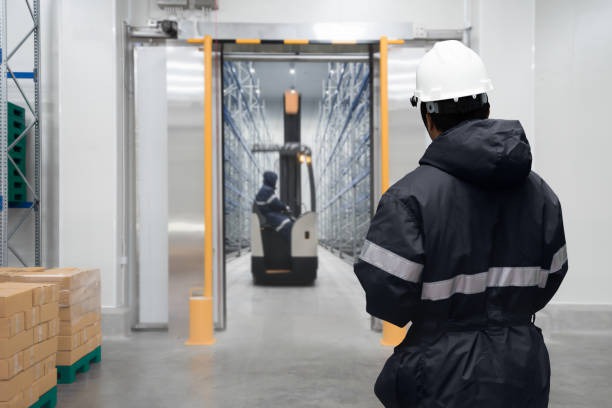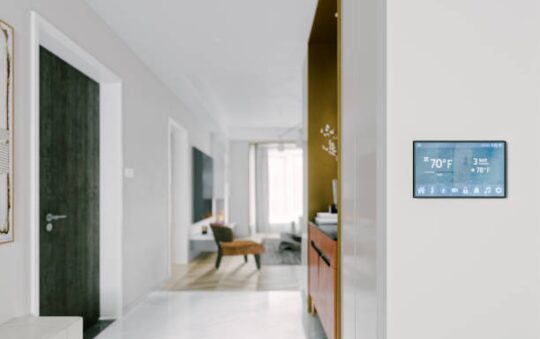In the construction industry, having a clear strategy to maintain timelines and budgets is essential. At the heart of this strategy for many firms is the design-build approach. Renowned for its efficiency, it combines design and construction services under one roof, providing a streamlined process from start to finish.
A Unified Team
This approach harnesses the strength of a unified team. By having architects, engineers, and builders work closely together, a natural synergy develops. Communication barriers—often found in more traditional models—are minimized. Decisions are quicker, misunderstandings are fewer, and projects move forward efficiently.
The Benefits of Streamlining
The design-build model is a game-changer when it comes to efficiency. Projects are completed faster, and budgets are more accurate. But why is this?
Reduced Costs
-
Fewer Change Orders: Changes can be expensive. With design-build, initial plans are more detailed, reducing the need for costly changes later.
-
Integrated Budgets: Since the team works under one contract, budget estimates are more holistic and encapsulate all facets of the project.
Faster Project Completion
A streamlined team means that phases of the project overlap more naturally. While the design is being finalized, permits can be secured, and initial groundwork might start.
Project Management and Planning
Effective project management and meticulous planning are cornerstones of successful design-build endeavors. It’s not just about putting bricks together; it’s about foreseeing challenges and having the agility to address them.
Advanced Planning Tools
Projects today benefit from sophisticated planning tools. Digital platforms allow teams to visualize projects in 3D, foresee potential issues, and adjust plans before they become costly problems. This is especially crucial in vibrant construction hubs where the pace of development is brisk.
Stakeholder Meetings
Regular check-ins with stakeholders ensure that the project meets expectations. These meetings allow for timely feedback and adjustments, ensuring everyone is on the same page.
The Role of Technology
The marriage of technology with industrial projects is invaluable. Today’s tech provides real-time data, predictive analytics, and a whole realm of possibilities that were mere dreams only a decade ago.
Software and Automation
-
Software Solutions: Tools that track project time, budget allocation, and resources ensure projects are always on track.
-
Automation: From drones assessing progress in real-time to robots assisting with construction tasks, technology reduces manual errors and speeds up the process.
Expertise and Experience
The backbone of any successful construction project is the team behind it. Experienced professionals bring forward-thinking solutions and anticipate potential roadblocks.
Robust Knowledge
A professional industrial design build company leverages its deep well of knowledge, honed over years, to navigate complex challenges seamlessly. Their expertise ensures that projects don’t just meet standards but often set new ones.
Understanding Local Regulations
A profound understanding of local standards and regulations is essential. Different locales have different construction codes and environmental considerations. Navigating these successfully can make the difference between a stalled project and a successful one.
Permits and Compliance
-
Timely Acquisitions: Securing permits early in the process prevents bottlenecks.
-
Adherence to Codes: Local regulations are strictly adhered to, ensuring projects don’t face legal obstacles.
Communication Channels
Clear and consistent communication prevents misinformation and ensures that all parties involved are informed of developments as they happen.
Digital Platforms
-
Centralized Systems: Platforms where stakeholders can access updated project information anytime.
-
Virtual Meetings: Regular virtual check-ins for teams scattered across different locations.
Flexibility and Adaptability
Even with the best-laid plans, unforeseen changes can occur. Adaptability ensures that projects remain on track despite such challenges.
Responsive Adjustments
In bustling regions, it’s essential to pivot and adjust strategies swiftly when unexpected changes arise. Whether due to supply chain disruptions or design modifications, being flexible ensures continuity and project success, particularly in the dynamic field of design build Columbus endeavors.
Building Strong Client Relationships
Trust and Transparency
Clients feel more at ease when project developments are transparent. Regular updates and open communication build trust, ensuring smoother project execution.
Whether one is involved in a bustling hub like design build in Houston, TX or any other city pushing the boundaries of modern construction, these principles hold firm.
Sustainability and Environmental Considerations
In today’s construction landscape, sustainability is not just a trend but a necessity. Design-build firms are increasingly focusing on incorporating sustainable practices and materials to create environmentally friendly and energy-efficient structures.
Eco-Friendly Materials
-
Selecting Sustainable Resources: The design-build approach facilitates the careful selection of sustainable building materials that have minimal environmental impact.
-
Recycled and Renewable Options: The use of recycled materials or those from renewable sources helps reduce the carbon footprint of construction projects.
Energy Efficiency
-
Integrated Systems: Incorporating energy-efficient systems such as advanced HVAC, solar panels, and efficient lighting from the onset of the project.
-
Smart Technologies: Smart building technologies are utilized to monitor and manage energy consumption more effectively.
Green Building Standards
-
LEED Certification: Many design-build projects aim for Leadership in Energy and Environmental Design (LEED) certification, which recognizes best-in-class building strategies and practices.
-
Compliance with Local Environmental Regulations: Ensures that projects not only meet but exceed local environmental and sustainability standards.
Community and Environmental Impact
-
Site Selection: Choosing locations and designs that minimize environmental disruption and enhance the local ecosystem.
-
Long-Term Benefits: Designing with the future in mind—considering the building’s long-term impact on its surroundings and inhabitants.
Final Thoughts
Streamlining project timelines and budgets in the construction world is no small feat. The design-build model, combined with technology, expertise, and open communication, represents an efficient means to achieve these goals. As the design-build approach continues to evolve, so too will its capacity to deliver exceptional results, making it a preferred choice for many seeking efficiency and reliability.




